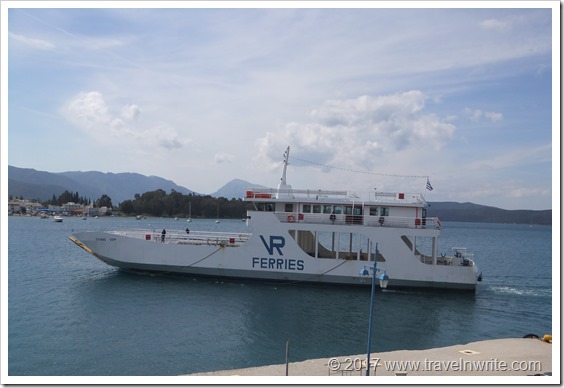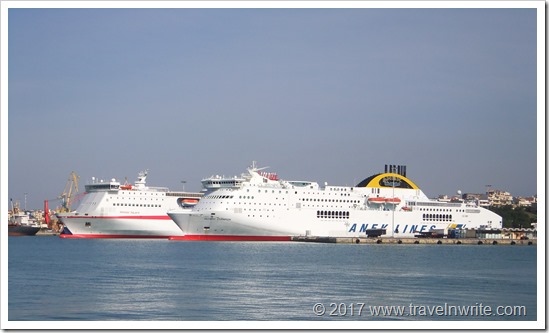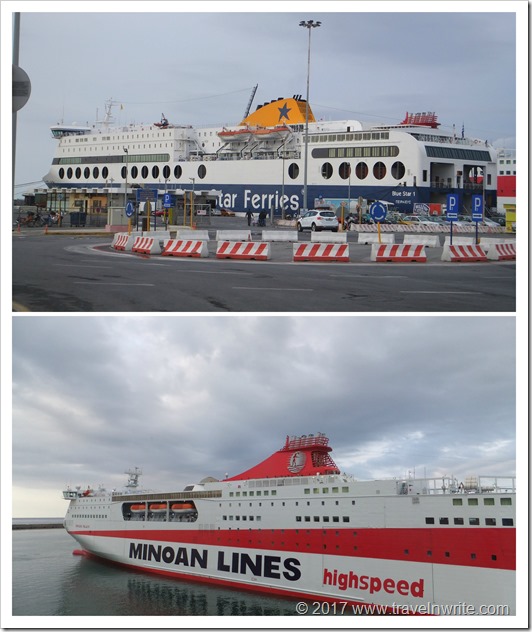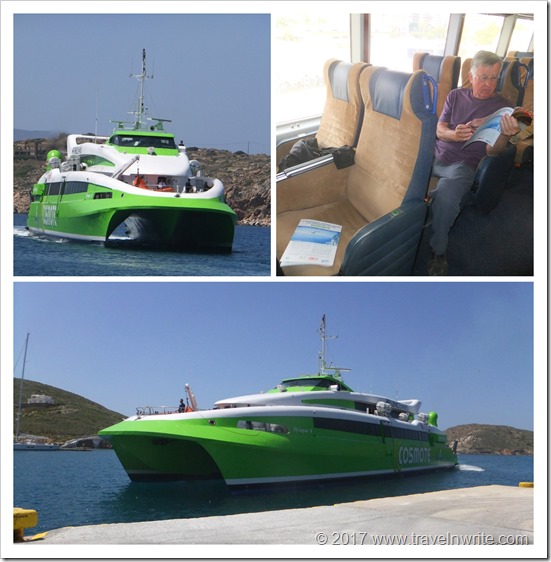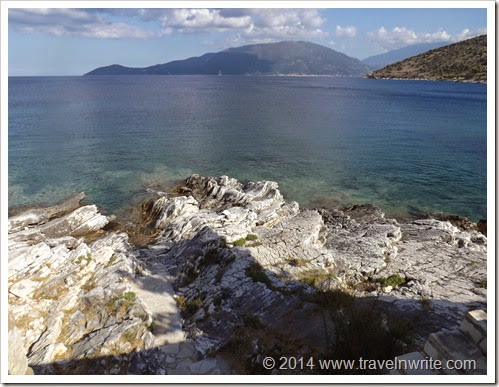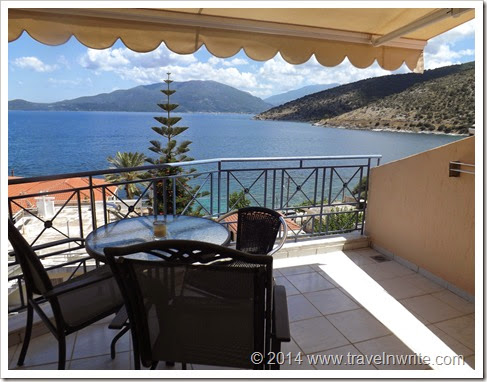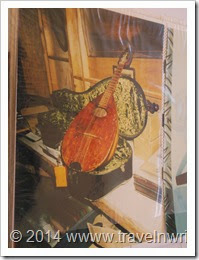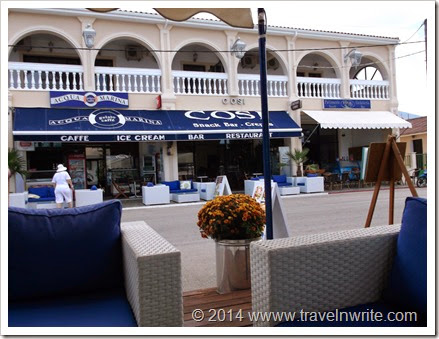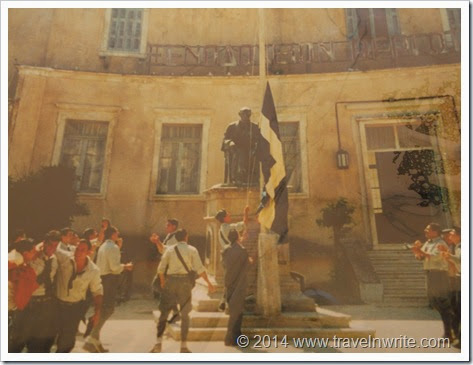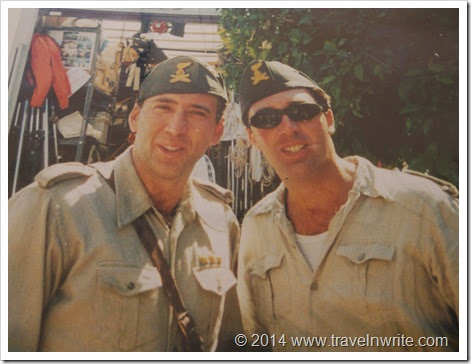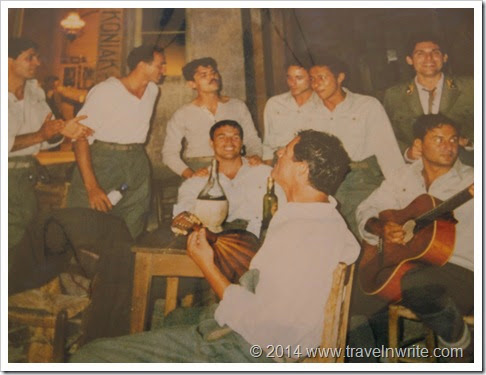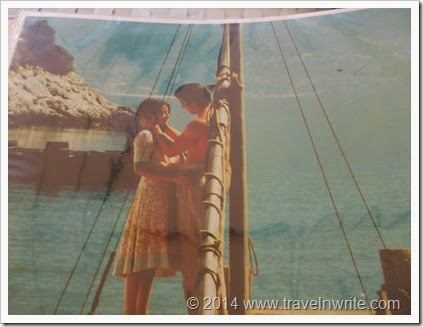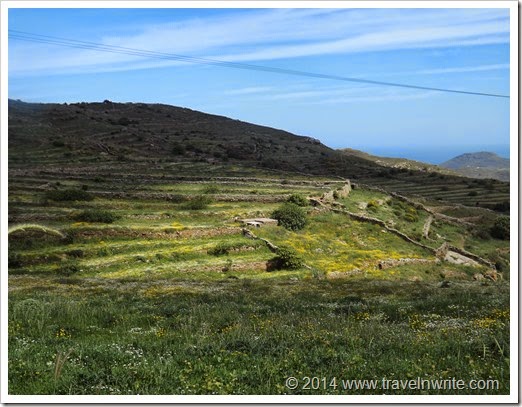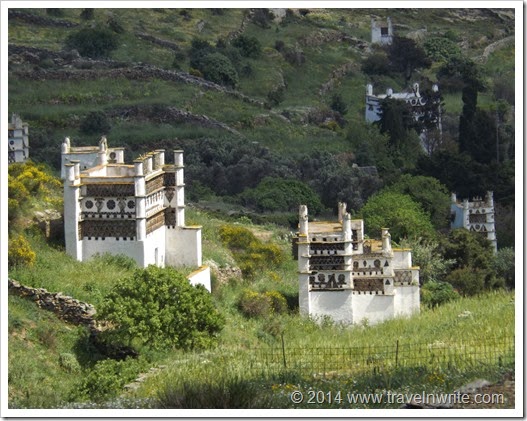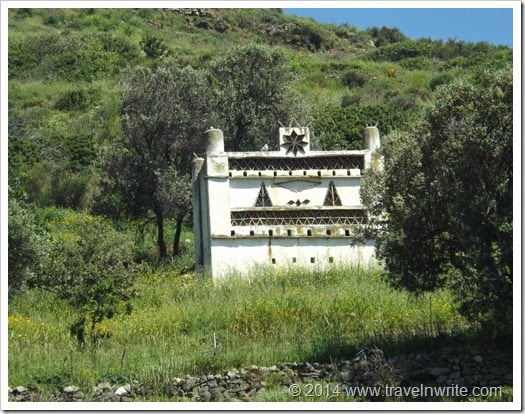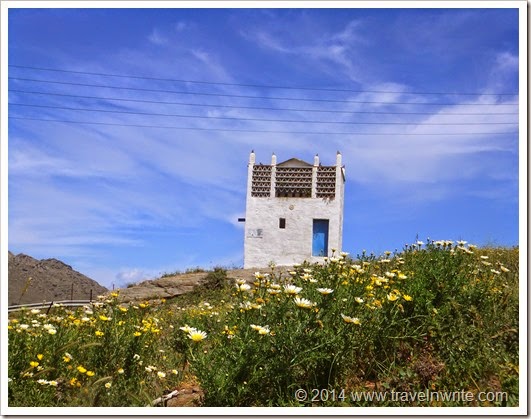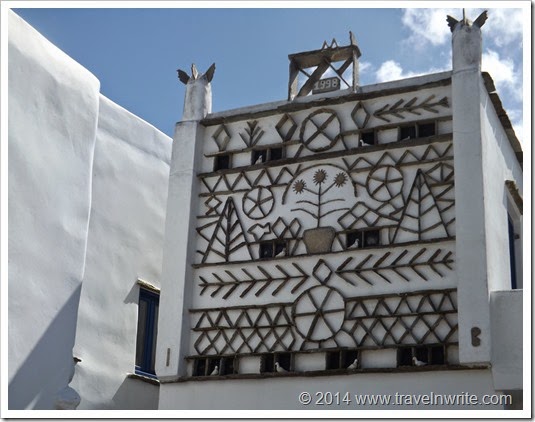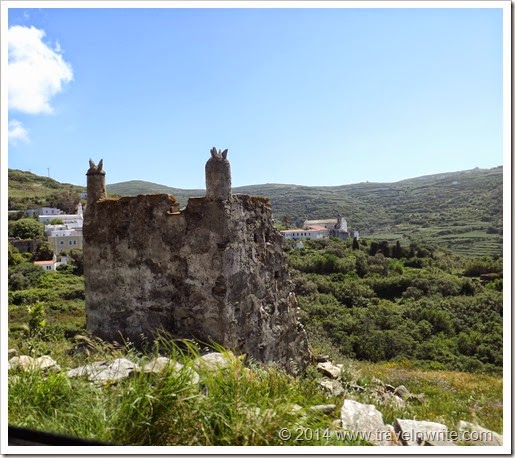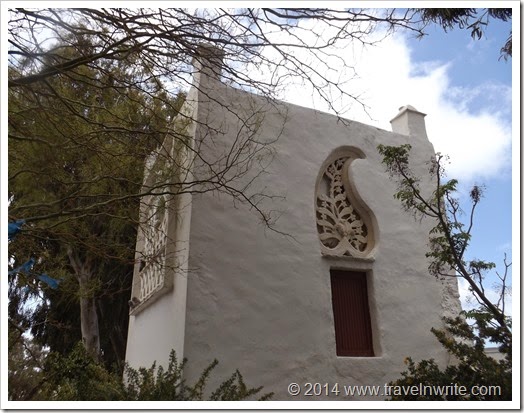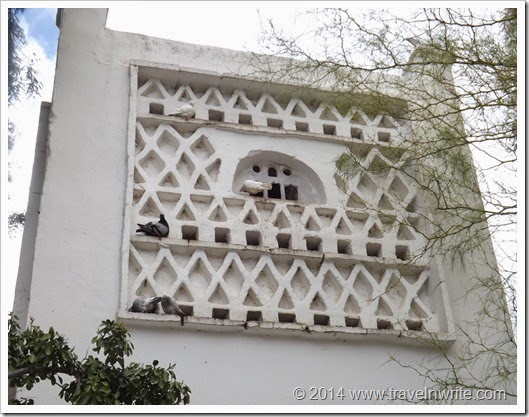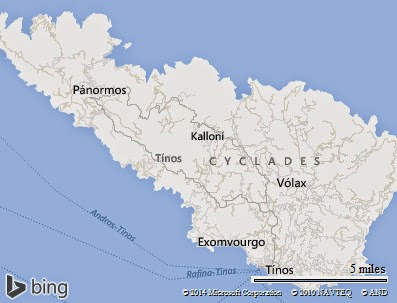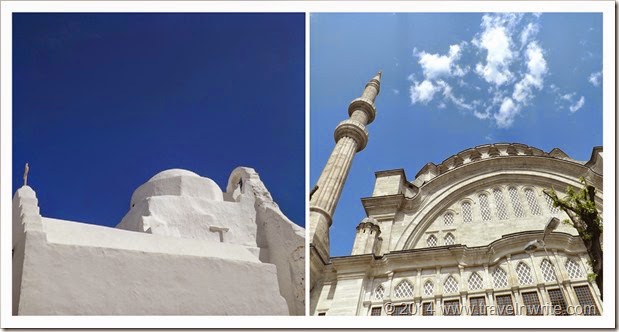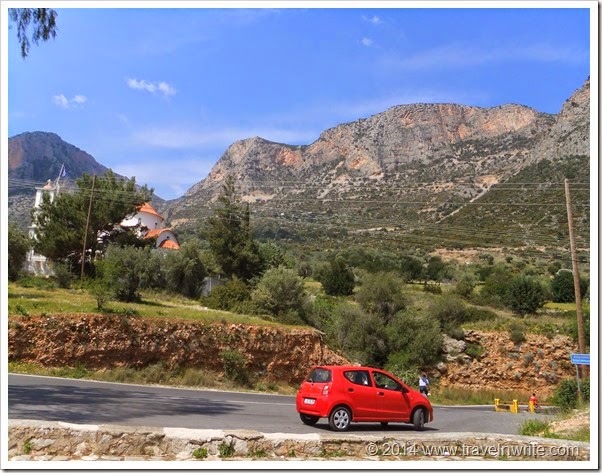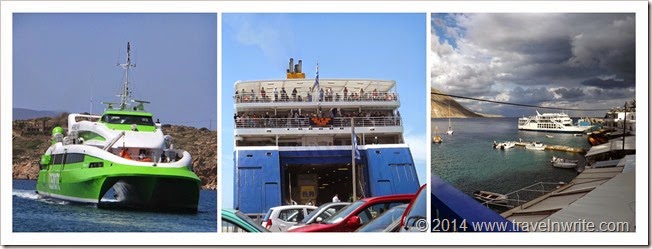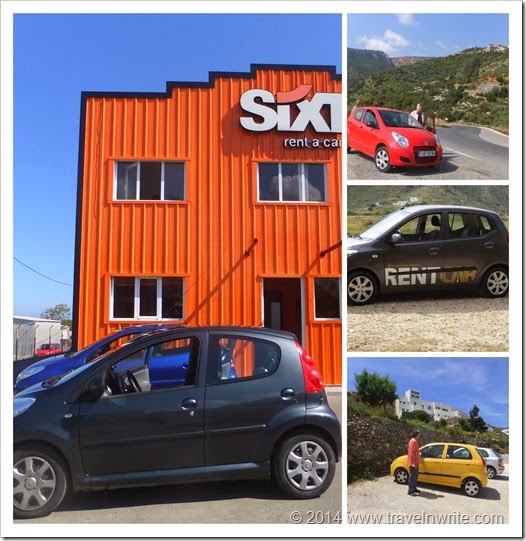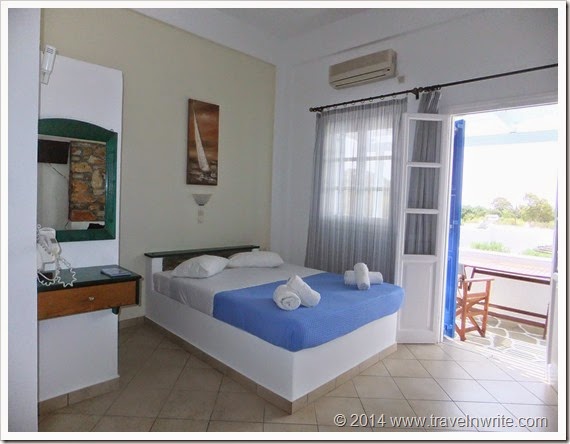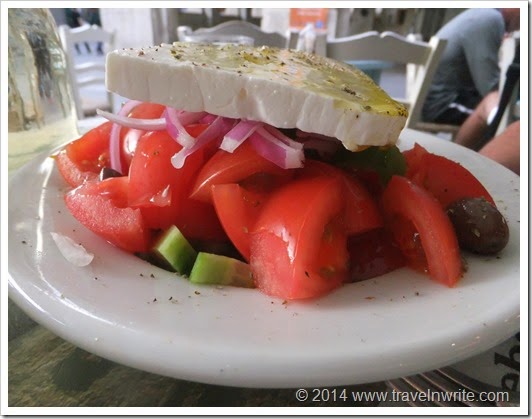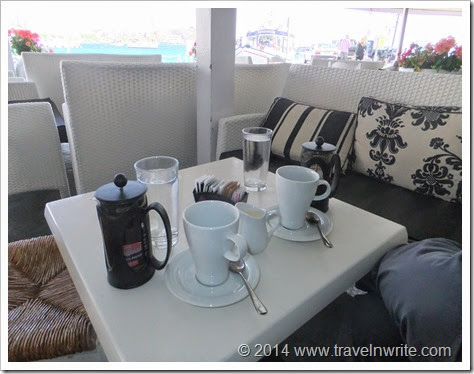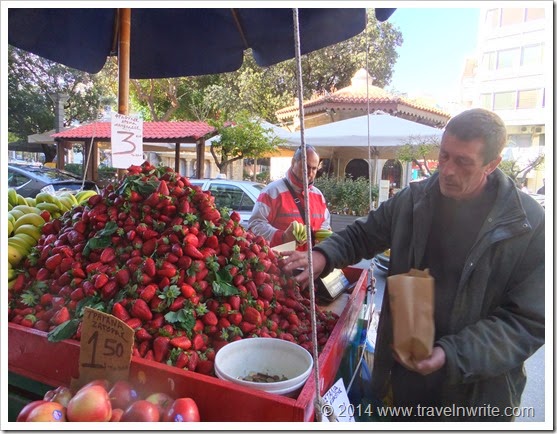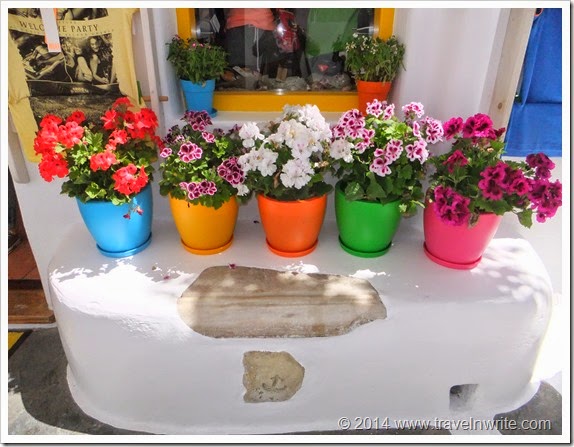Aphrodite is the Greek goddess of love, sex, and beauty.
According to those on the island of Kythera, she was born there.
Their claim is based on the myth by Hesiod, a poet who lived about the same time as Homer. (Actually I checked and Hesiod claimed she was born of the sea (think of that image of her on that big clam shell) and she floated past Cytherea (Kythera) and emerged at Cyprus.
We were reminded of that fact when we took a road trip last week to Kythera, a seasonally popular destination – and possibly Aphrodite’s birthplace. Some travel writer’s have labeled it the perfect Greek island with just enough tourism to keep it prosperous and hopping 'in season' but not yet over-run.
| Ferry to Kythera leaves from Neopoli |
Road trips to Greek islands involve the ubiquitous Greek ferry experience; one that merges both myth and reality. The Greek ferry is a great mode of transport if you have a flexible schedule and itinerary. (We love the romance and adventure of Greek ferry travel and have tried every size and shape of ship. Remember when I debunked that myth of how dangerous they are in this post?)
The reality of ferry travel is: Schedules vary and can change at the slightest bit of inclement weather. Sometimes they operate and sometimes they don’t – with or without reason. And they are not necessarily a cheap way to travel these days.
| Kythira - a stone's throw from the Peloponnese |
Take our trip, for example: There’s a ferry to Kythera from Gythio, (right side middle finger on the map above) a town about an hour and a half from us. Or one from Neopoli (left side of right finger) a town three hours drive away. We’d preferred the Gythio departure but no one – including the travel agents who sell the ferry tickets – could tell us whether it would be running on the date we planned to travel. That's reality.
| Upper car deck was empty on the ferry the week after Easter |
We were off. . .to an island similar in size to Malta and boasting a population of 4,500 residents living in or near some 64 small villages. Its shores are washed by three seas: the Ionian, the Aegean and the Libyan. Mountains and valleys rise and fall in the island's center. Its coastline offers a host of beaches that attract sun and sea worshippers, many who take the 45-minute flight from Athens.
| Kythera/Kythira island |
But as the ferry approached this reputedly gorgeous destination, I started wondering if we were at the right place: two shipwrecks greeted us as did a scattering of buildings that constituted the harbor ‘town’ on the island. Hmmm. . .an interesting introduction.
| Introduction to Kythera |
The island’s history, like so many places in Greece, dates back to the Minoans, through the Myceneans and Phoenicians. In more ‘recent’ history the Venetians dominated from the 13th to the 18th century and the British laid claim from 1815 until 1864.
| The British built bridge dates back to the early 1800's |
When we stopped for afternoon cappucinos in the town of Potamos the island’s enchantments began to emerge. It was quiet as we were there the week after Greek Easter and before the sun-seeking tourists arrived. But the warmth of welcome and the architectural charms were already winning us over.
| Potamos town |
| Hotel Pelagia Aphrodite |
When we checked out, there was a rose bush from the farm - a gift -- so that I could grow my own fragrant rose bouquets (and that was even better than hotel loyalty points!) For you flower buffs out there these roses have 100 petals per bloom, smell heavenly and are used in cooking.
We spent our island time exploring the villages; spending a full day driving from the north end to the south, stopping at uniquely charming places along the way. We didn’t even start to explore the many beaches that border the island – that adventure will be for a future trip.
One of our favorite spots was the village of Avlemonas where the rental suites and hotels were still shuttered and only a handful of visitors sipped and supped on the taverna’s terrace overlooking the sea. It was the type of place that stirs the imagination and I could envision writing a book cloistered away in this place.
| Picture-perfect Avlemonas |
| How does one get here? |
| Kapsali village |
| Hikers take note - this trail leads to water mills |
| Agia Pelagia |
That’s it for this week from The Stone House on the Hill. As always, we appreciate the time you’ve spent reading our latest ‘ferry’ tale. Hope to see you back here again next week for another dose of something Greek and until then, safe and happy travels to you and yours!
Linking this week with these writers from around the world. And most happy that we’ve been featured this week on Best of Weekend – a great collection of travel news, do-it-yourself-projects, home decorator ideas and some great recipes. Do check it and the others out by following the links below:
Through My Lens
Our World Tuesday
Wordless Wednesday
Communal Global
Travel Photo Thursday –
Best of Weekend



